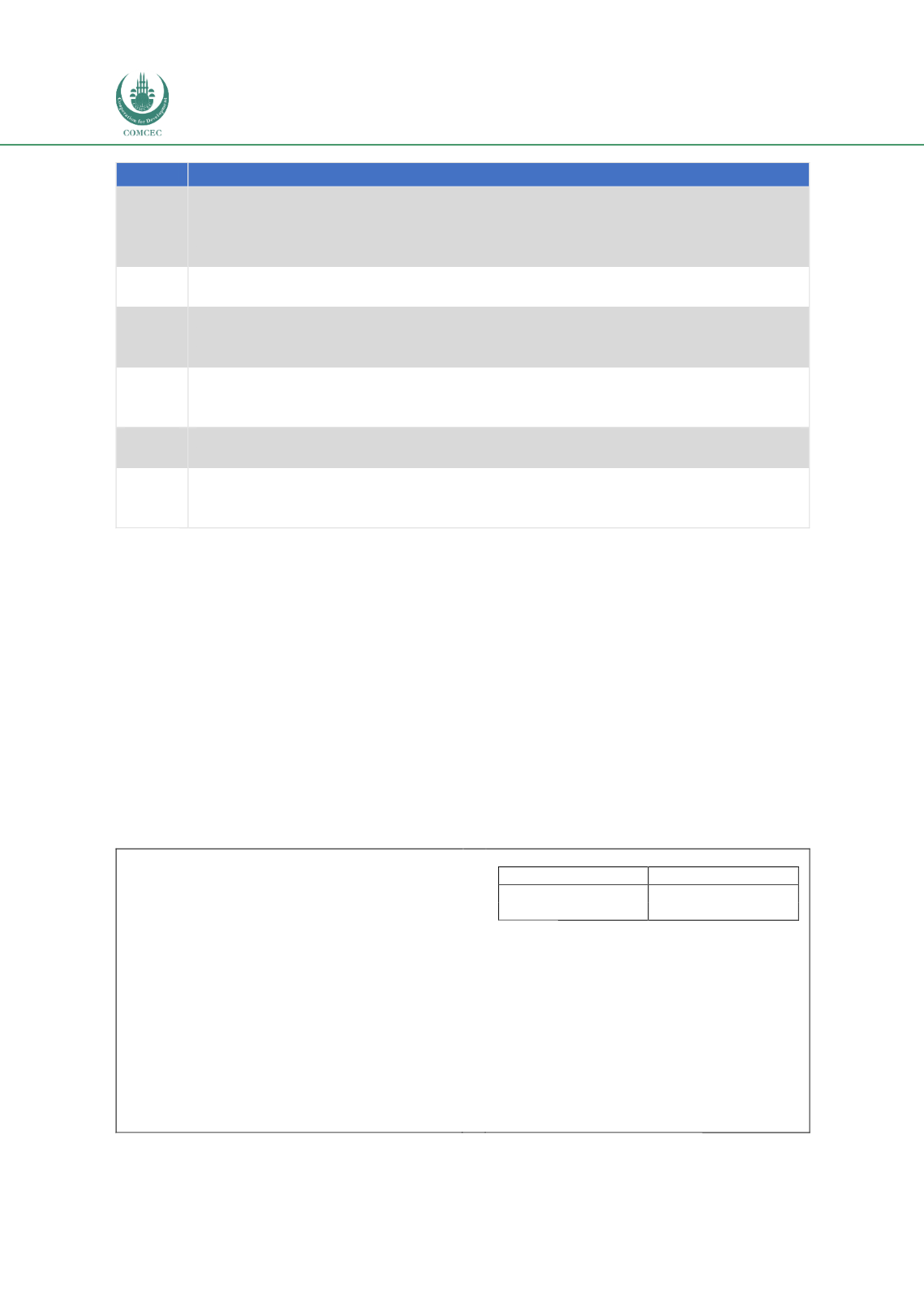

Islamic Fund Management
78
Year
Timeline Description
2009
Guidelines on ETFs.
SC signed MRA with the Securities and Futures Commission of Hong Kong.
Liberalisation of equity holdings in capital market intermediaries, to allow foreign
ownership of conventional and Islamic fund management companies.
2011
SC signed a memorandum of understanding (MOU) with Central Bank of Ireland.
Launch of CMP2
2012
SC signed MOU with Commission de Surveillance du Secteur Financier Luxembourg to
facilitate the offering of Islamic undertakings for collective investment in transferable
securities.
PRS framework.
SAC amended the Shariah screening methodology and adopted a two-tier quantitative
approach.
2014
Launch of the ASEAN CIS framework by Malaysia, Singapore and Thailand to facilitate cross-
border offering of CIS, including Islamic CIS.
2017
SC’s Islamic Fund and Wealth Management Blueprint.
Guidelines on SRI funds.
Digital investment management framework.
Source: SC
International managers managing a significant portion of Islamic funds in Malaysia as the
liberal environment permits full foreign ownership, with no restrictions on overseas
investments. As a result, as at end-2017, 20 full-fledged Islamic fund management companies
are operating in Malaysia, half of which are entirely foreign-owned while one is a local-foreign
joint venture.
A major deliverable by the SC under the CMP2 is the development of Malaysia’s private
retirement landscape. The key goals of the CMP2 includes facilitating markets’ effective
utilisation of domestic savings for capital formation, increasing the capacity and efficiency of
the capital markets in financing the investment requirements for economic growth, and
addressing the efficiency of savings intermediation, which includes the development of PRS, as
described i
n Box 4.1 .Box 4.1: Malaysia’s PRS landscape
The retirement landscape in Malaysia has been
boosted by the development of a PRS framework,
Under Budget 2012, the Government of Malaysia
(GOM) announced a tax relief of up to RM3,000 per
annum for eligible individuals from YA2012 to YA
2022. An additional incentive was provided under
Budget 2014, whereby RM500 contributed by
persons aged between 20 and 30 will be matched by
the GOM. Budget 2017 raised the incentive to
RM1,000. As a result of these initiatives, the PRS
sector has been expanding about 30% annually
since its launch in 2012, although the relatively
small number of contributors suggests that more
needs to be done to encourage investment in this
scheme.
Fact sheet
As at Dec 2017
Number of members
301,279
NAV
RM2.2 billion
Source: SC
Since its launch in 2012, the AuM of PRS has
swelled from RM66.0 million (contributed by
22,000 members) to RM1.7 billion (from
248,000 members) in 2017. Notably, the number
of contributors still constitutes fewer than 1% of
the Malaysian population. In contrast, the AuM
of the unit trusts industry augmented from
RM505.0 billion to RM750.0 billion during the
same period, suggesting that PRS is growing at a
slower rate than unit trusts.
Source:
FIMM Today – State of the Malaysian Investment Management Industry, December 2017
















